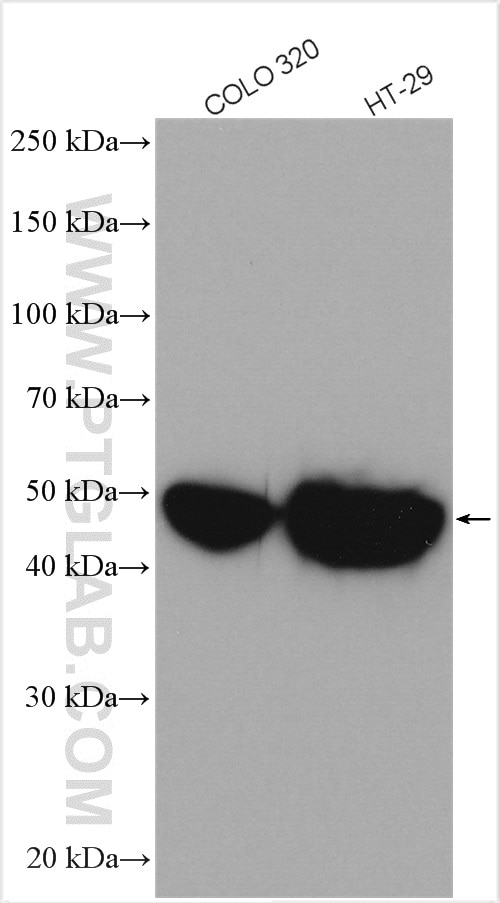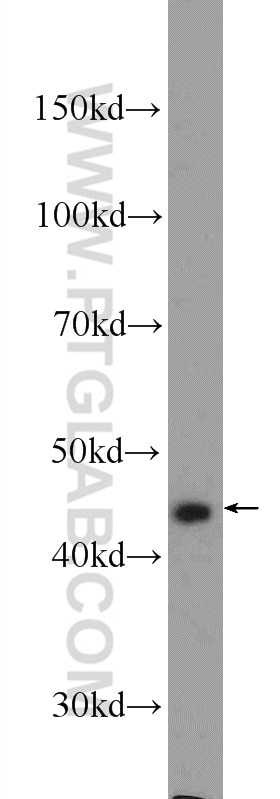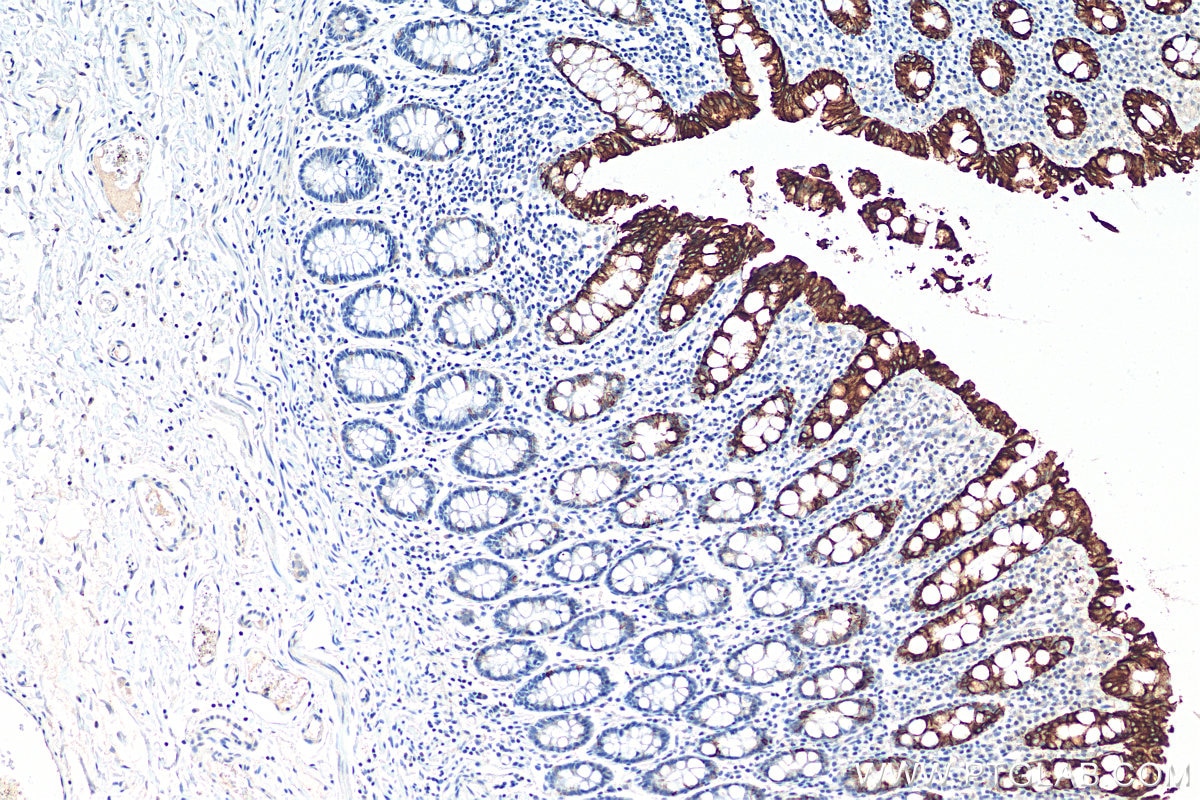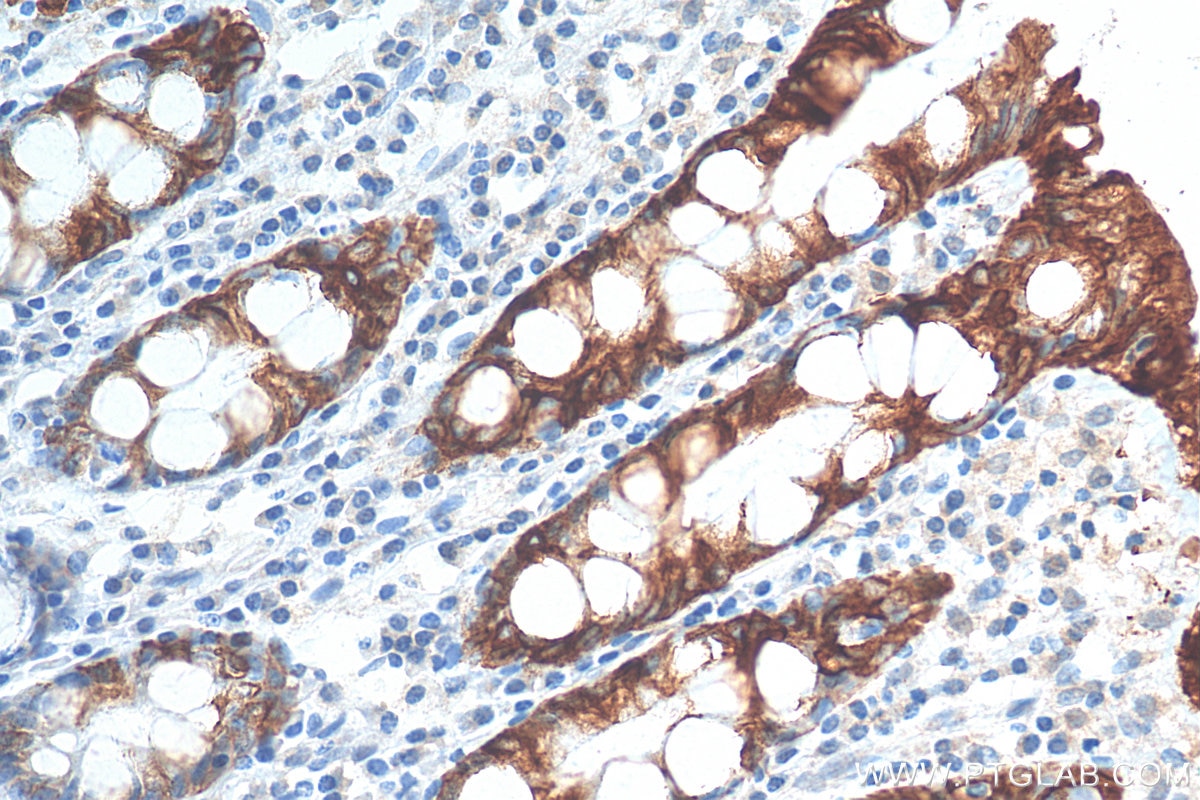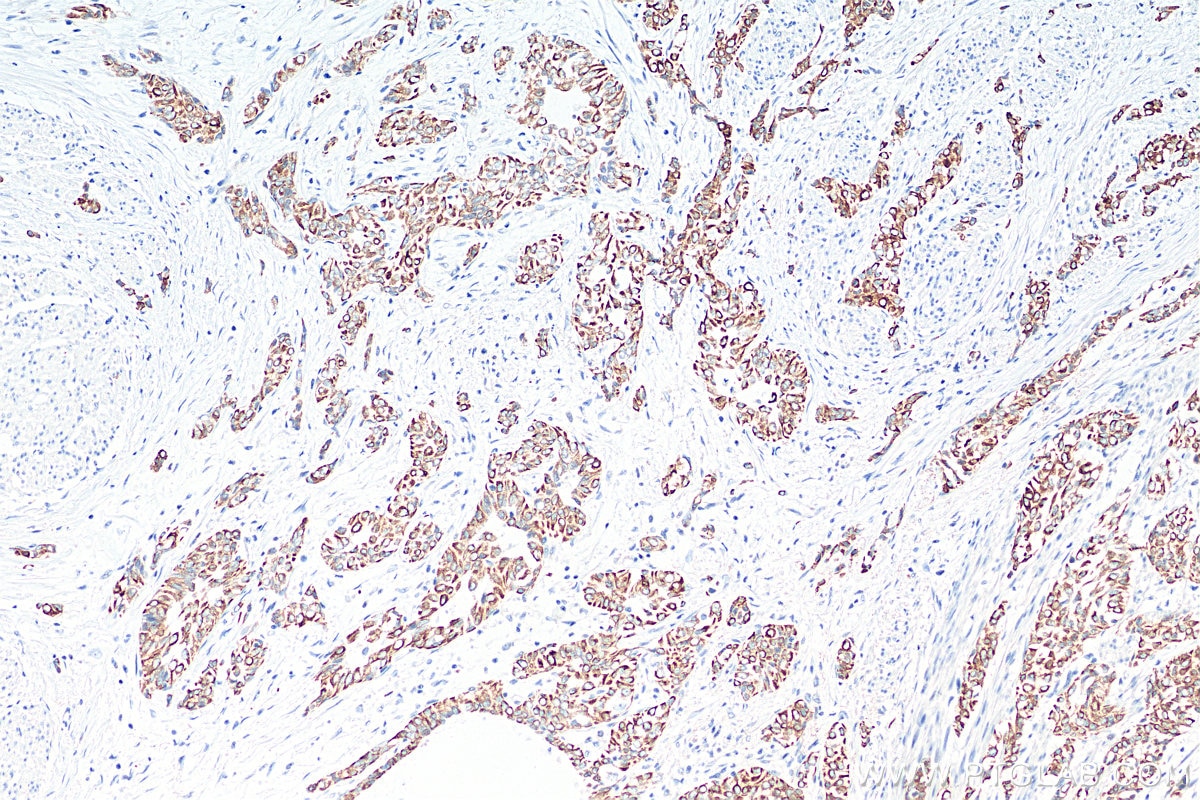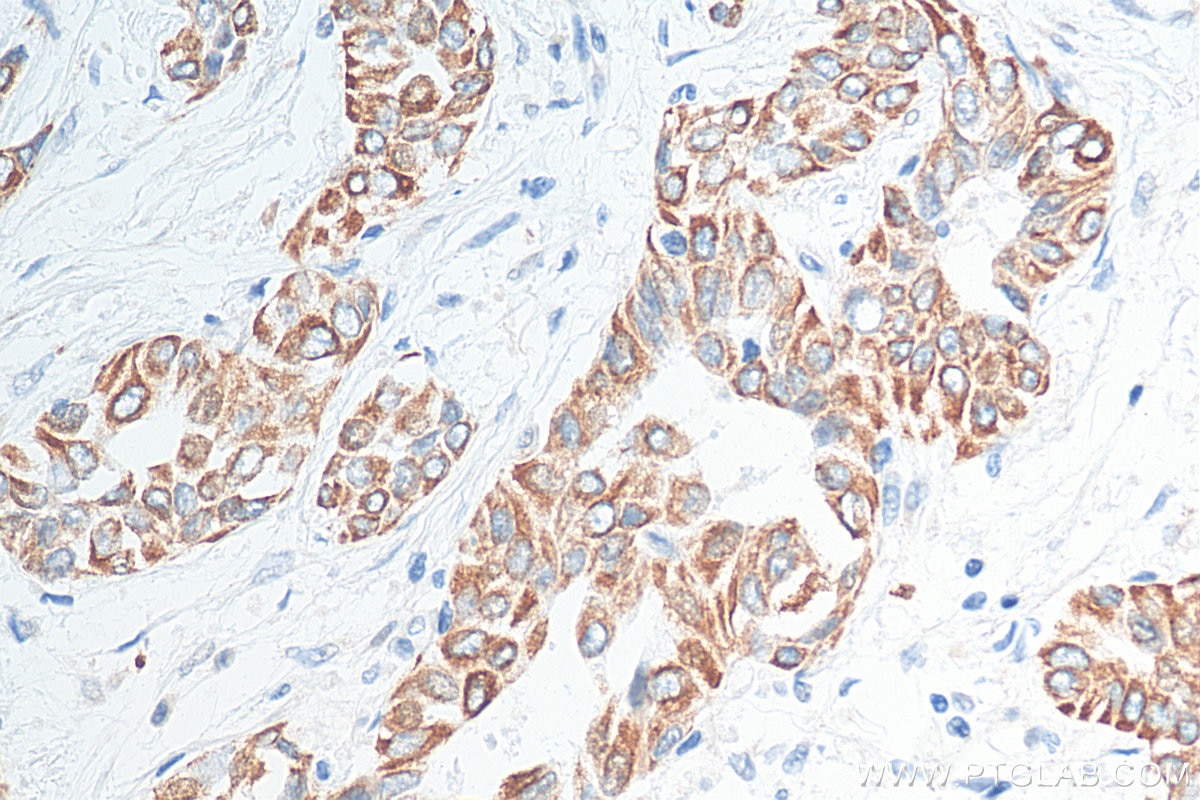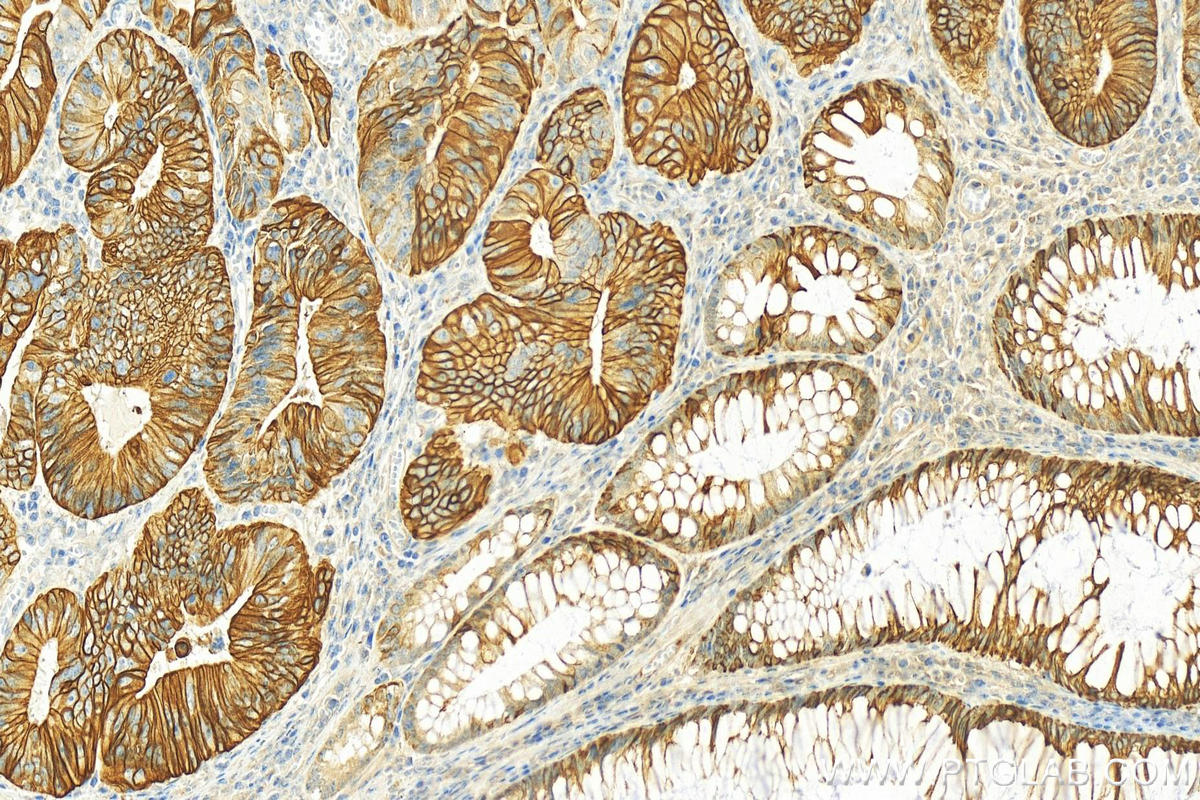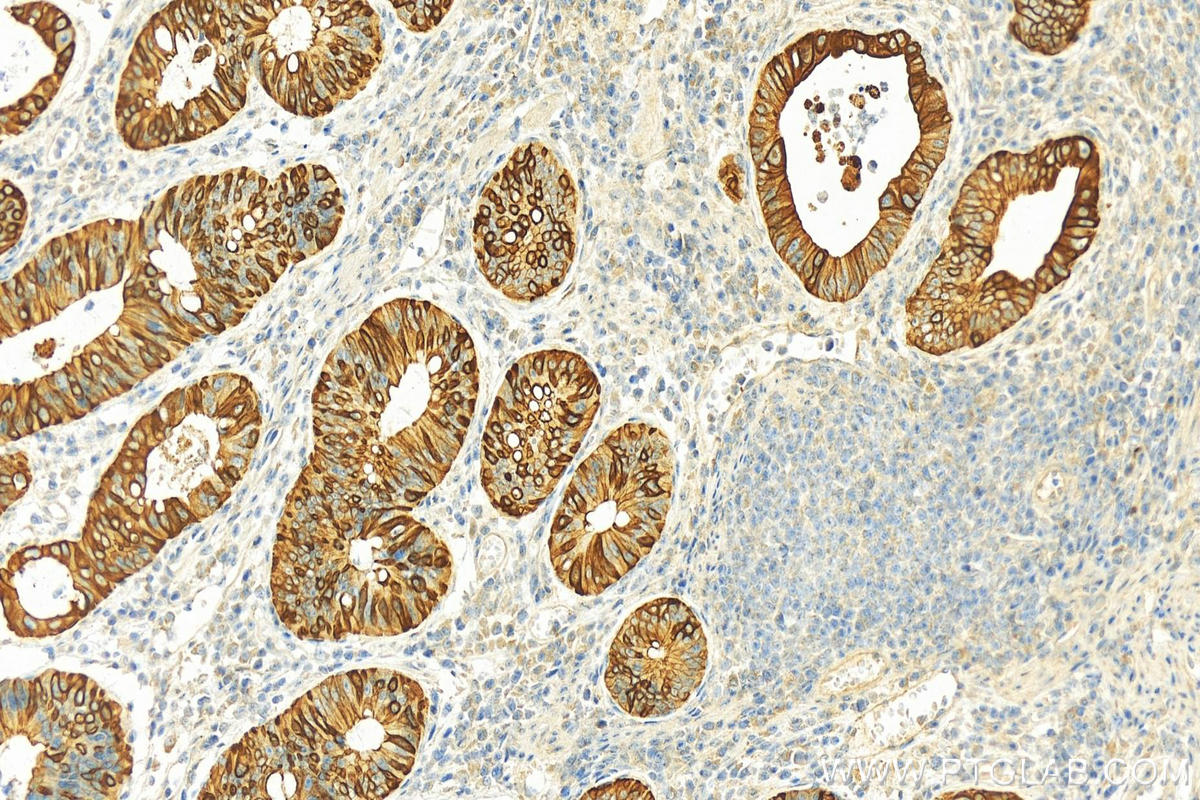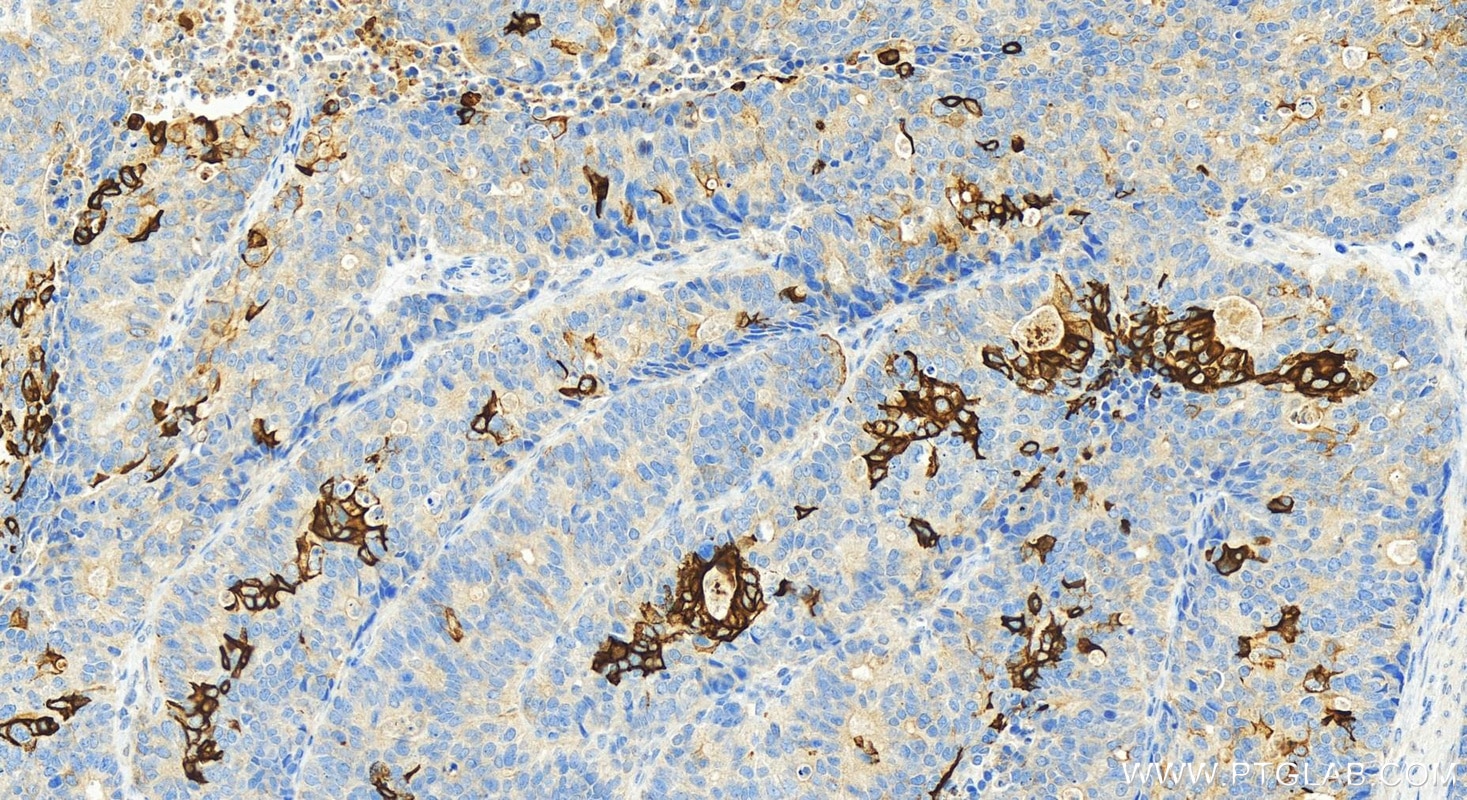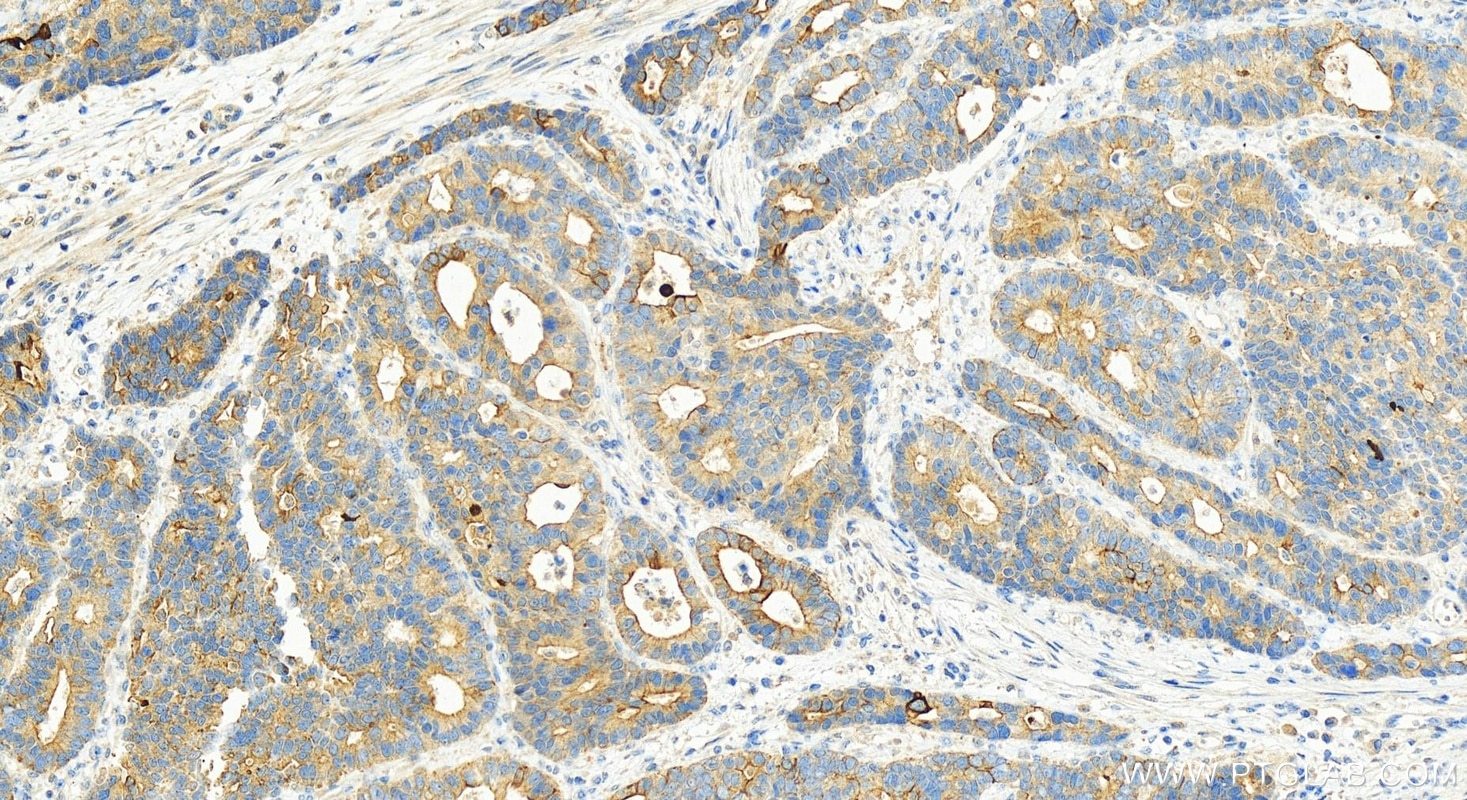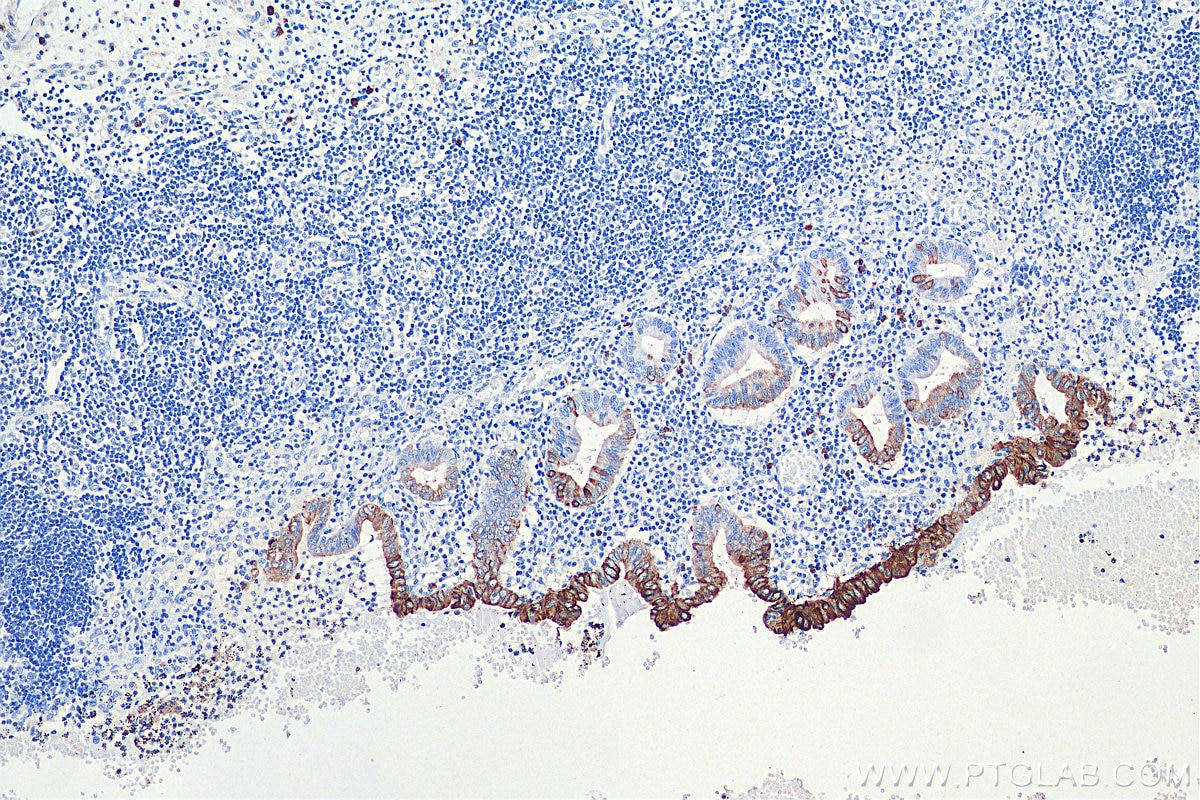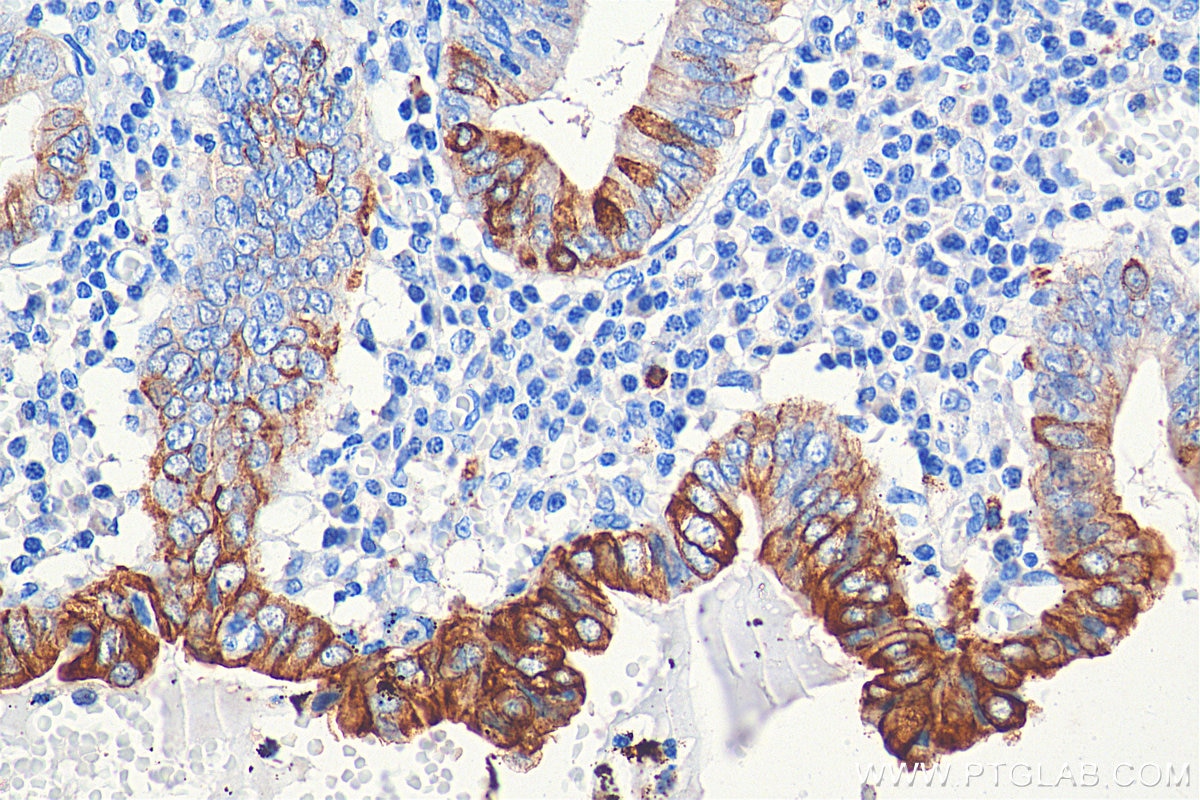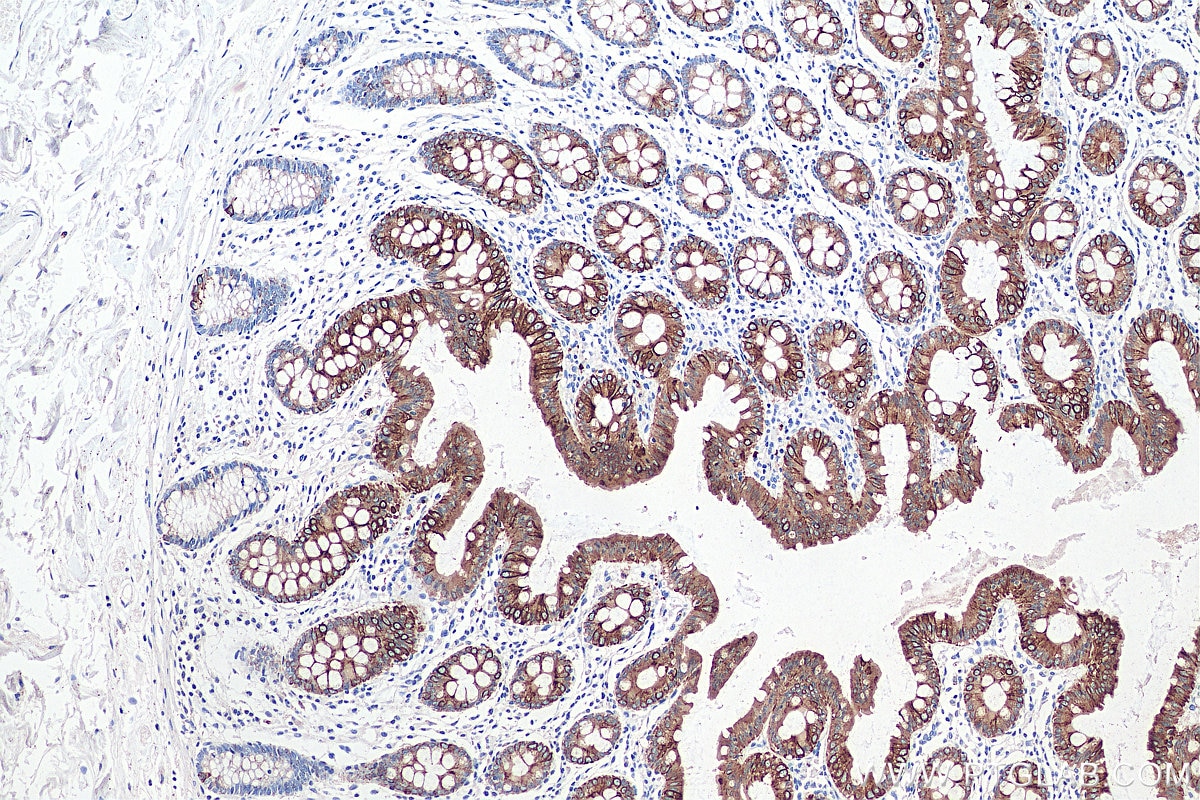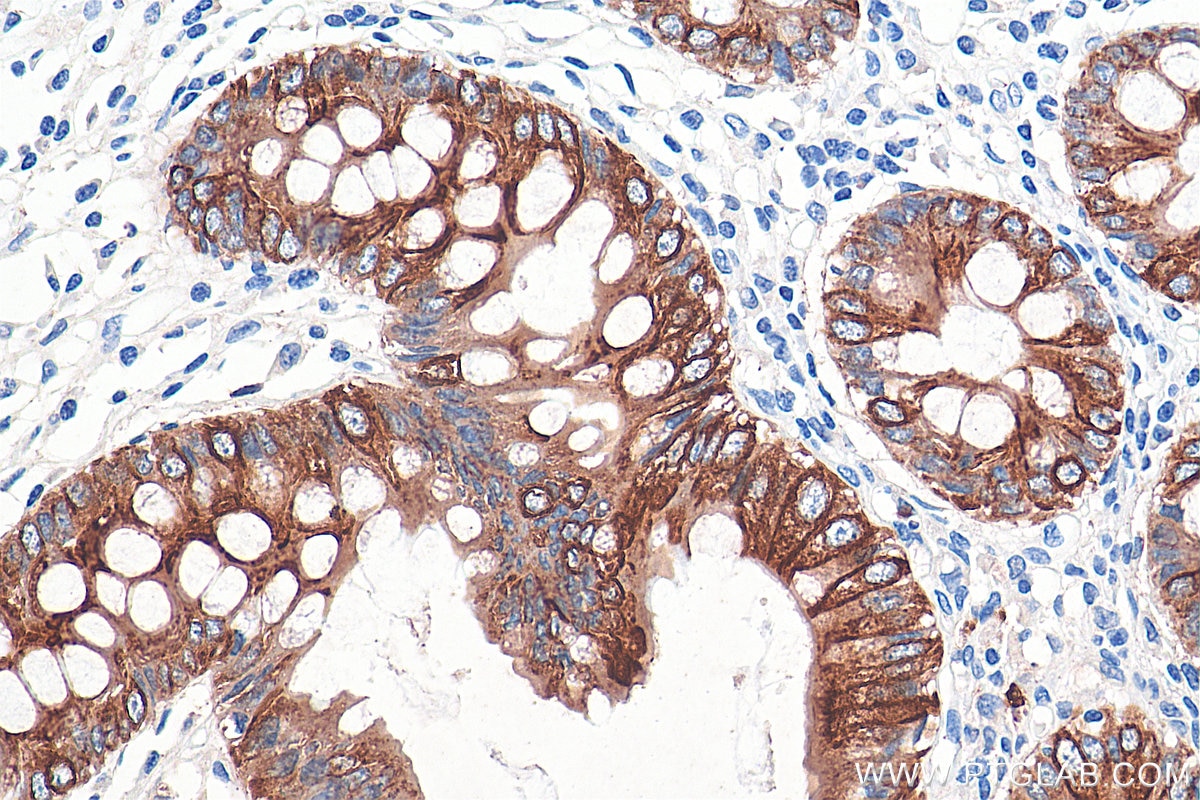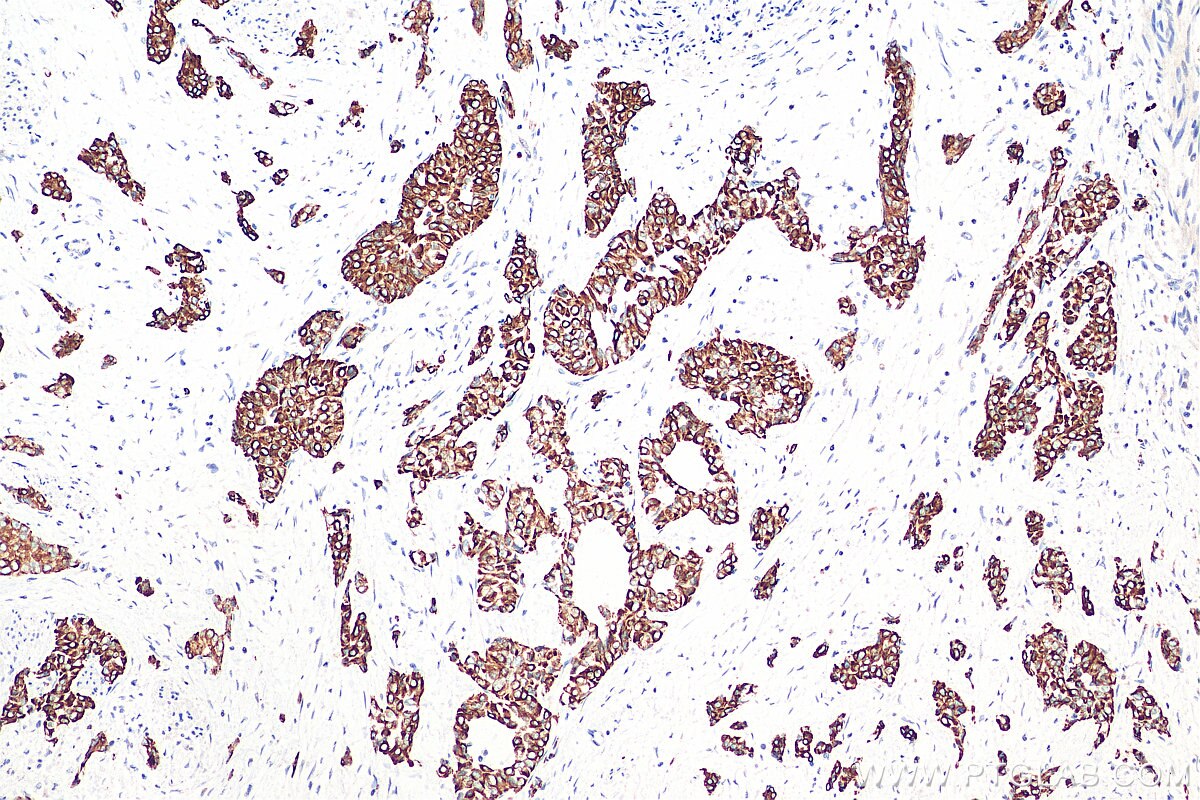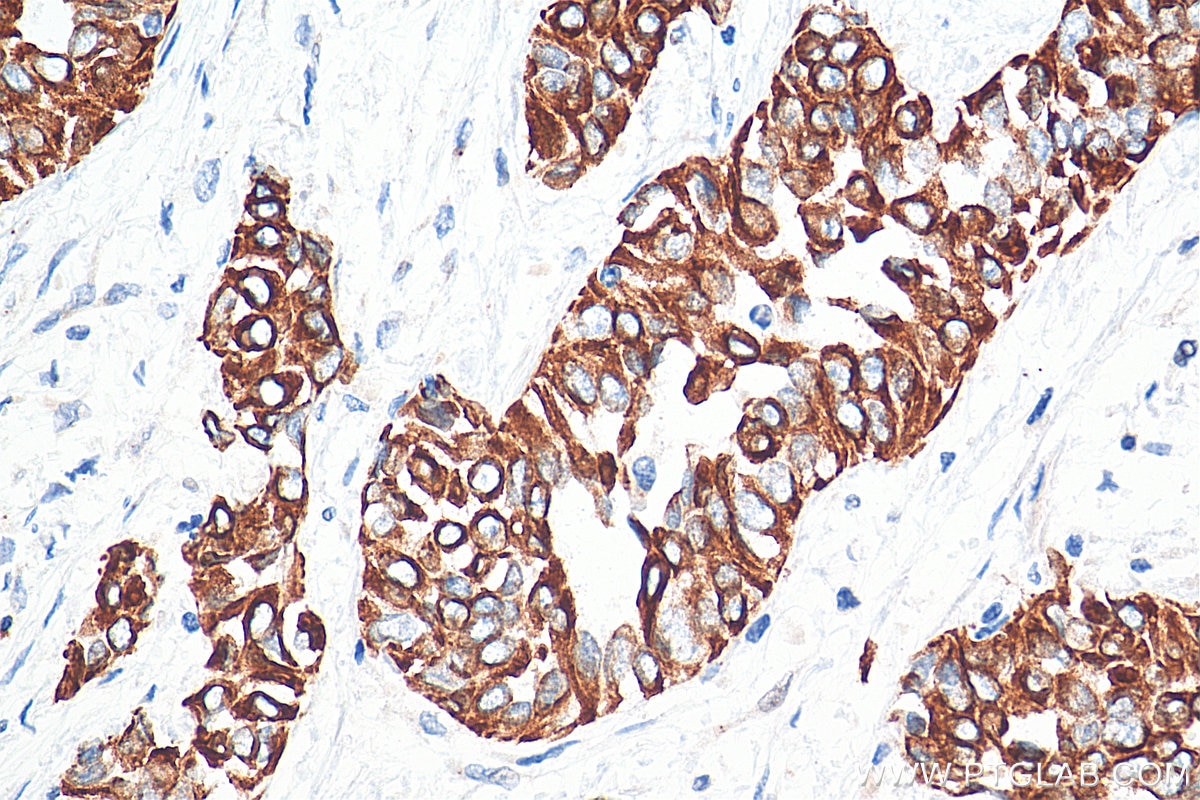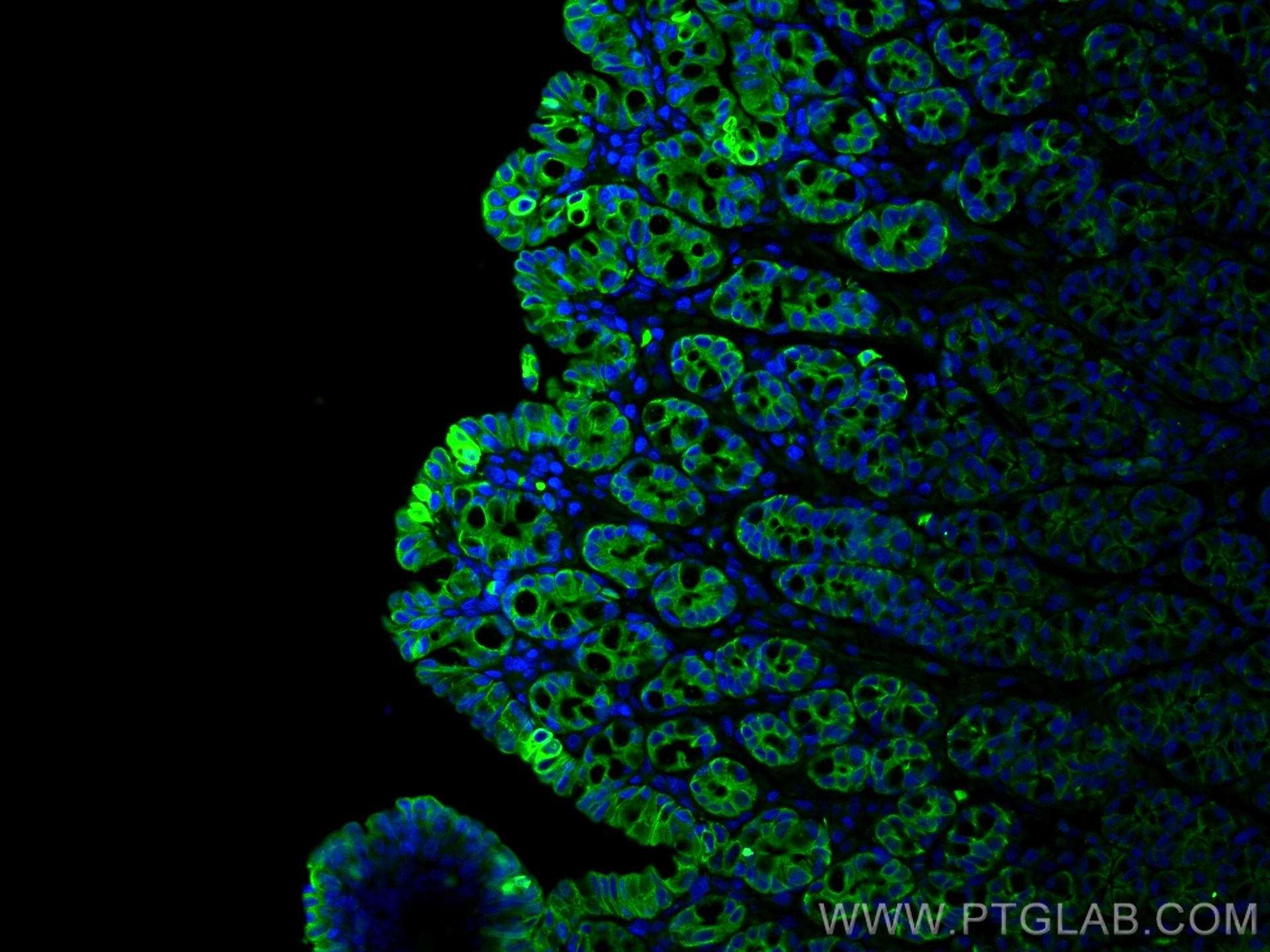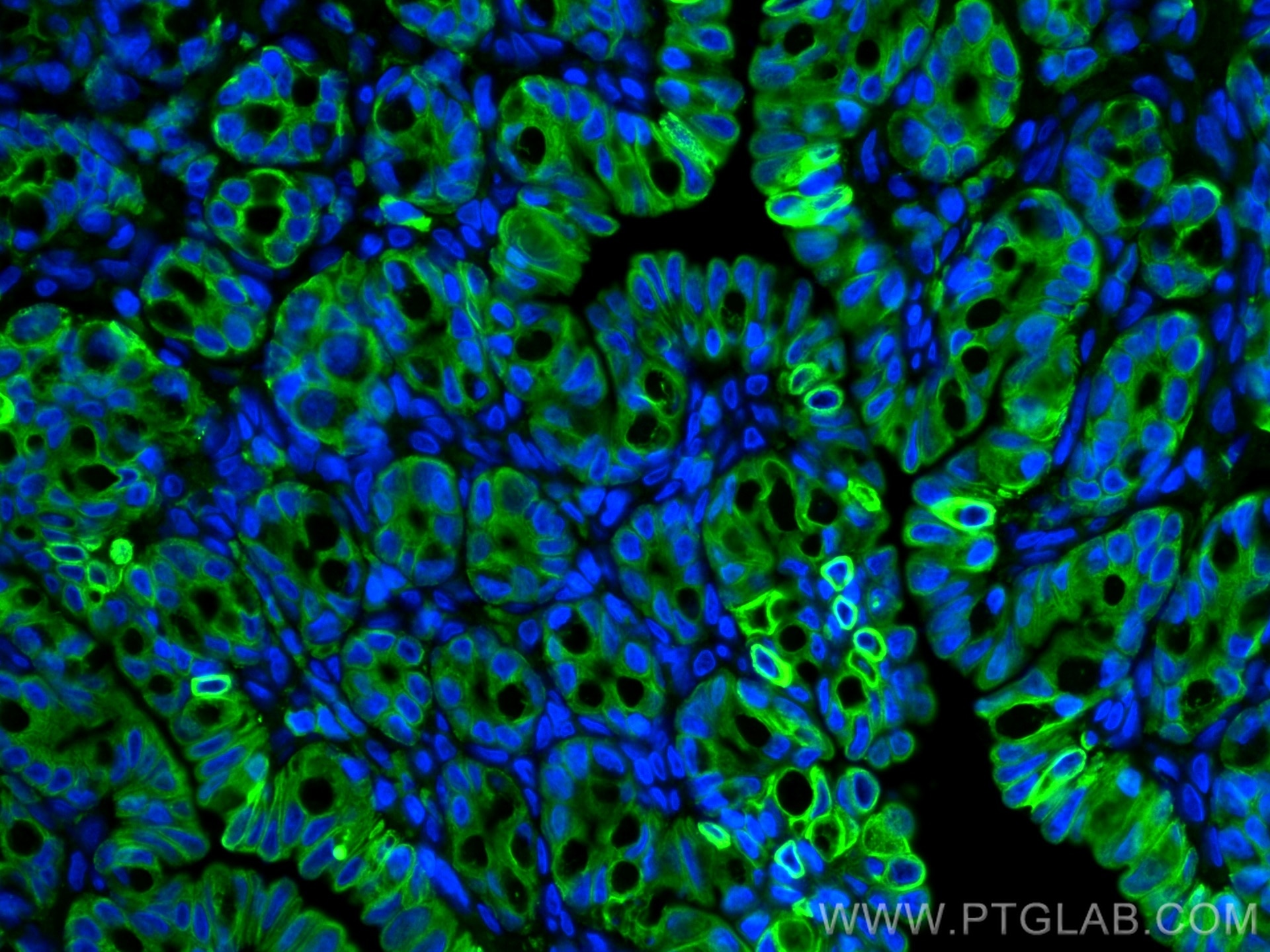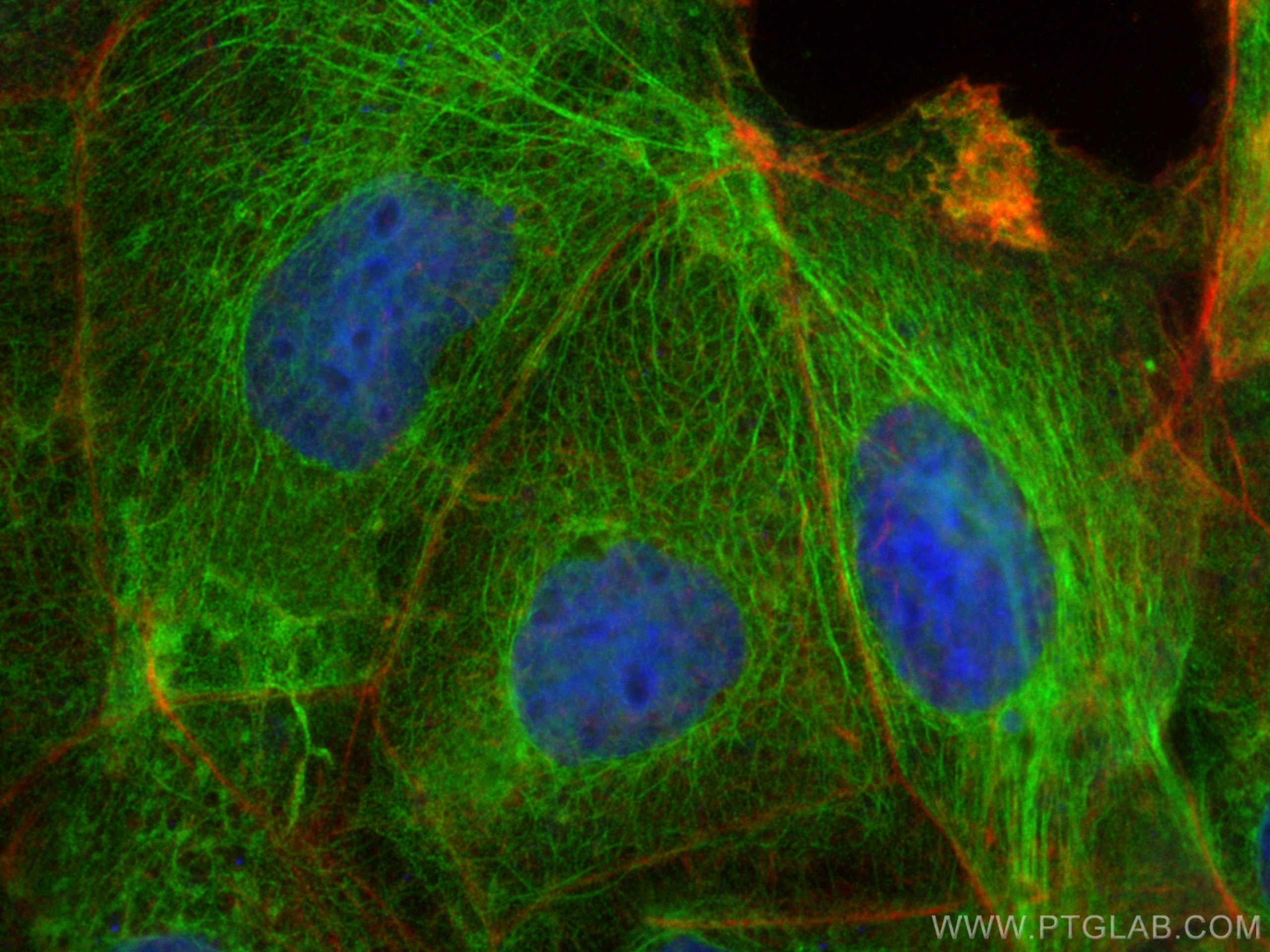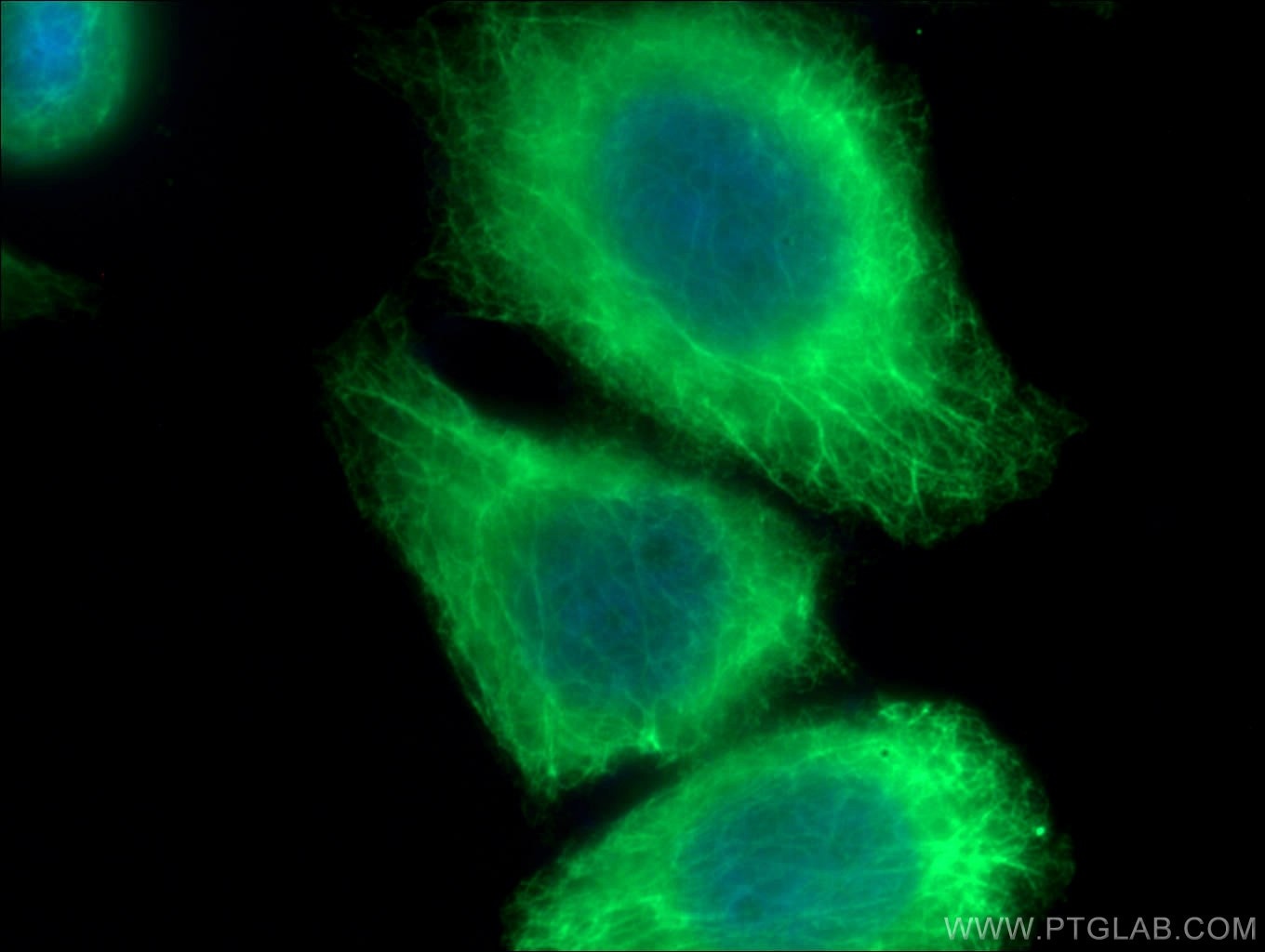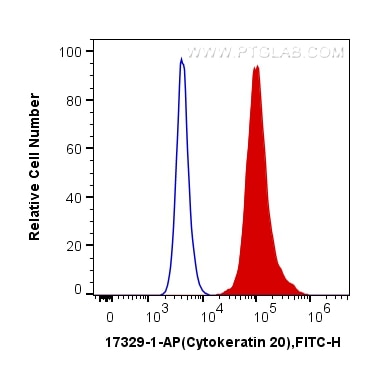Cytokeratin 20 Polyklonaler Antikörper
Cytokeratin 20 Polyklonal Antikörper für WB, IHC, IF/ICC, IF-P, FC (Intra), ELISA
Wirt / Isotyp
Kaninchen / IgG
Getestete Reaktivität
human, Kaninchen, Maus, Ratte
Anwendung
WB, IHC, IF/ICC, IF-P, FC (Intra), ELISA
Konjugation
Unkonjugiert
Kat-Nr. : 17329-1-AP
Synonyme
Geprüfte Anwendungen
| Erfolgreiche Detektion in WB | COLO 320-Zellen, HeLa-Zellen, HT-29-Zellen |
| Erfolgreiche Detektion in IHC | humanes Kolongewebe, humanes Appendizitis-Gewebe, humanes Kolonkarzinomgewebe, humanes Magenkrebsgewebe, humanes Urothelkarzinomgewebe Hinweis: Antigendemaskierung mit TE-Puffer pH 9,0 empfohlen. (*) Wahlweise kann die Antigendemaskierung auch mit Citratpuffer pH 6,0 erfolgen. |
| Erfolgreiche Detektion in IF-P | Rabbit colon tissue |
| Erfolgreiche Detektion in IF/ICC | Caco-2-Zellen, HeLa-Zellen |
| Erfolgreiche Detektion in FC (Intra) | HT-29-Zellen |
Empfohlene Verdünnung
| Anwendung | Verdünnung |
|---|---|
| Western Blot (WB) | WB : 1:2000-1:16000 |
| Immunhistochemie (IHC) | IHC : 1:1000-1:4000 |
| Immunfluoreszenz (IF)-P | IF-P : 1:500-1:2000 |
| Immunfluoreszenz (IF)/ICC | IF/ICC : 1:200-1:800 |
| Durchflusszytometrie (FC) (INTRA) | FC (INTRA) : 0.20 ug per 10^6 cells in a 100 µl suspension |
| It is recommended that this reagent should be titrated in each testing system to obtain optimal results. | |
| Sample-dependent, check data in validation data gallery | |
Veröffentlichte Anwendungen
| WB | See 2 publications below |
| IHC | See 2 publications below |
| IF | See 9 publications below |
Produktinformation
17329-1-AP bindet in WB, IHC, IF/ICC, IF-P, FC (Intra), ELISA Cytokeratin 20 und zeigt Reaktivität mit human, Kaninchen, Maus, Ratten
| Getestete Reaktivität | human, Kaninchen, Maus, Ratte |
| In Publikationen genannte Reaktivität | human, Maus |
| Wirt / Isotyp | Kaninchen / IgG |
| Klonalität | Polyklonal |
| Typ | Antikörper |
| Immunogen | Cytokeratin 20 fusion protein Ag11308 |
| Vollständiger Name | keratin 20 |
| Berechnetes Molekulargewicht | 424 aa, 48 kDa |
| Beobachtetes Molekulargewicht | 46 kDa |
| GenBank-Zugangsnummer | BC031559 |
| Gene symbol | Cytokeratin 20 |
| Gene ID (NCBI) | 54474 |
| Konjugation | Unkonjugiert |
| Form | Liquid |
| Reinigungsmethode | Antigen-Affinitätsreinigung |
| Lagerungspuffer | PBS with 0.02% sodium azide and 50% glycerol |
| Lagerungsbedingungen | Bei -20°C lagern. Nach dem Versand ein Jahr lang stabil Aliquotieren ist bei -20oC Lagerung nicht notwendig. 20ul Größen enthalten 0,1% BSA. |
Hintergrundinformationen
Keratins are a large family of proteins that form the intermediate filament cytoskeleton of epithelial cells, which are classified into two major sequence types. Type I keratins are a group of acidic intermediate filament proteins, including K9-K23, and the hair keratins Ha1-Ha8. Type II keratins are the basic or neutral courterparts to the acidic type I keratins, including K1-K8, and the hair keratins, Hb1-Hb6. Keratin 20 is a type I cytokeratin. It is a major cellular protein of mature enterocytes and goblet cells and is specifically found in the gastric and intestinal mucosa.
Protokolle
| PRODUKTSPEZIFISCHE PROTOKOLLE | |
|---|---|
| WB protocol for Cytokeratin 20 antibody 17329-1-AP | Protokoll herunterladen |
| IHC protocol for Cytokeratin 20 antibody 17329-1-AP | Protokoll herunterladenl |
| IF protocol for Cytokeratin 20 antibody 17329-1-AP | Protokoll herunterladen |
| STANDARD-PROTOKOLLE | |
|---|---|
| Klicken Sie hier, um unsere Standardprotokolle anzuzeigen |
Publikationen
| Species | Application | Title |
|---|---|---|
Cell Res Gut microbiota drives macrophage-dependent self-renewal of intestinal stem cells via niche enteric serotonergic neurons. | ||
Nat Cell Biol LncGata6 maintains stemness of intestinal stem cells and promotes intestinal tumorigenesis. | ||
Neuron 5-hydroxytryptamine produced by enteric serotonergic neurons initiates colorectal cancer stem cell self-renewal and tumorigenesis. | ||
Biomaterials A microengineered collagen scaffold for generating a polarized crypt-villus architecture of human small intestinal epithelium. | ||
Cancer Lett LGR4 cooperates with PrPc to endow the stemness of colorectal cancer stem cells contributing to tumorigenesis and liver metastasis. | ||
Nutrients Propolis Has an Anticancer Effect on Early Stage Colorectal Cancer by Affecting Epithelial Differentiation and Gut Immunity in the Tumor Microenvironment |
Rezensionen
The reviews below have been submitted by verified Proteintech customers who received an incentive for providing their feedback.
FH Felletár (Verified Customer) (05-09-2025) | Immunohistochemical staining was performed using a novel, pre-commercial automated staining-covering and scanning system. The protocol included a 30-minute incubation with the primary antibody and utilized a polymer-based horseradish peroxidase (HRP) detection system. Heat mediated antigen retrieval with Tris-EDTA buffer (pH 9.0). scanning under 20x lens.
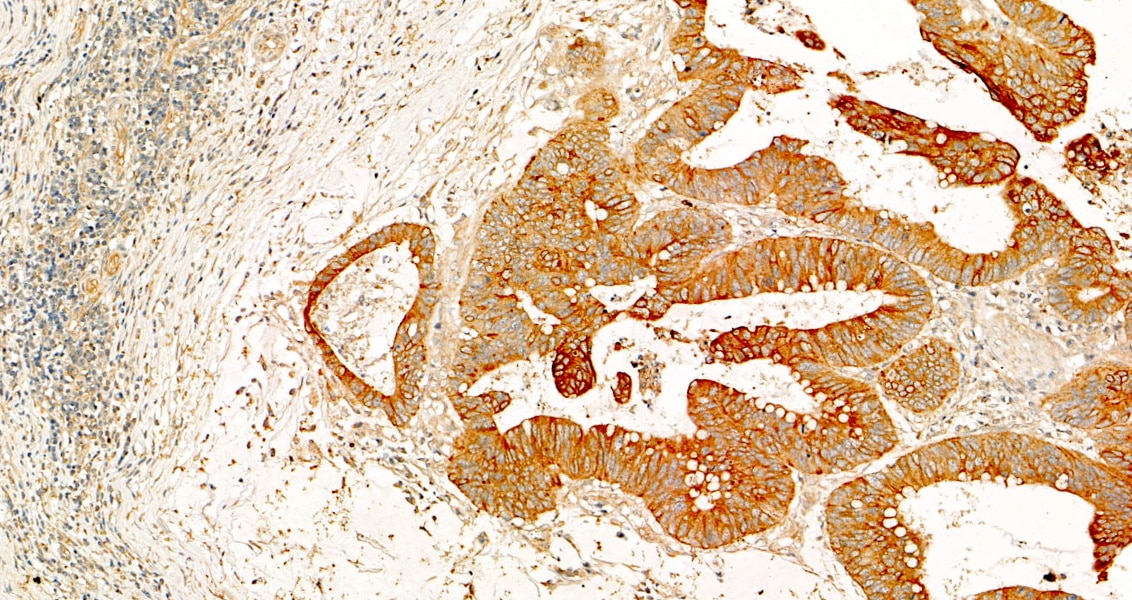 |
